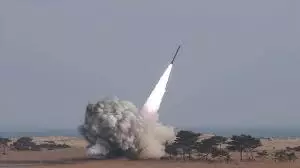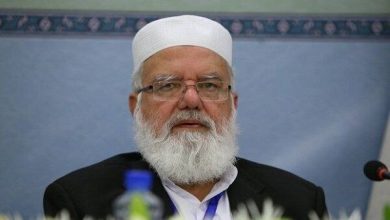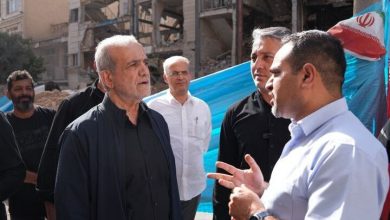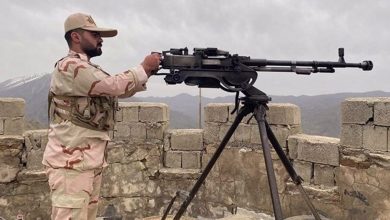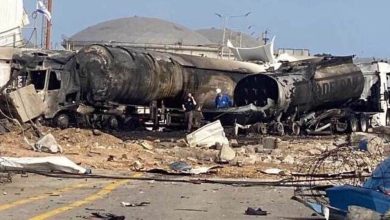Iranian Missiles Target Key Israeli Military-Scientific Center at Weizmann Institute
Iran's retaliatory missile strikes have devastated the famed Weizmann Institute of Science, associated with the Israeli military, in the city of Rehovot, just south of Tel Aviv, leaving it in smoldering ruins.
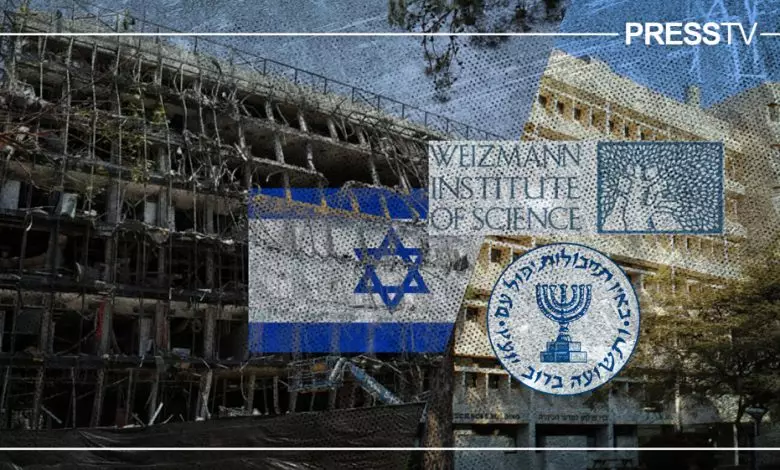
Once a key pillar of Israel’s scientific and military research sector, the institute, renowned for its strong affiliations with the Israeli military-industrial complex, now stands in ruins and is non-functional.
Israeli media reports suggest that the precision strike was “far from accidental,” allegedly targeting a center associated with advanced research linked to Tel Aviv’s military operations, focusing on disciplines such as physics, biotechnology, and artificial intelligence.
In an interview with Channel 13, Alon Chen, the president of the Israeli Weizmann Institute, confirmed that Iranian ballistic missiles had precisely hit crucial structures within the expansive complex, resulting in significant and irreversible damage.
In his statement, he refuted earlier assertions from certain regime officials who had claimed that the missile strikes were arbitrary and had caused minimal damage.
Chen informed the Israeli television channel that the devastation is considerable, with preliminary assessments estimating damages between $300 million and $500 million.
He clarified that the institute complex is divided into two segments—a smaller residential area and a larger scientific section. He further noted that “Iran aimed at the latter, indicating they struck at the core of the institute with remarkable precision in their strikes.”
In response to reporters’ queries regarding the regime’s censorship of imagery depicting the full extent of the damage, Chen acknowledged the imposition of such restrictions. He clarified that the intent is to hinder Iran from accessing information that could potentially facilitate future attacks on these sites.
He stated that it is imperative to recognize that the Iranians have monitored missile strike locations within Israel, extending beyond Weizmann to numerous military bases and strategic sites, details of which have not been publicly disclosed thus far.
Channel 13 has highlighted a situation where the Israeli settler community is reportedly uninformed about the precision, scale, and impact of the Iranian assaults across numerous sites.
In spite of attempts to suppress information, surveillance footage and photographs have surfaced, depicting ballistic attacks on structures and highlighting the extensive damage incurred.
**Significant Loss of Research Spanning Decades**
On June 15, 2025, Iranian ballistic missile strikes caused substantial damage to the Weizmann Institute of Science in Rehovot, a city situated within the occupied Palestinian territories.
Several facilities within the institute’s complex have been targeted and demolished.
A newly built chemistry and materials science laboratory, which was scheduled to open in 2025, has experienced significant destruction, with certain accounts indicating it has been nearly annihilated.
A facility devoted to life and computational sciences sustained significant damage, as fires broke out in at least one laboratory. This center was home to vital research initiatives, such as cancer research and regenerative medicine.
Professor Eldad Tzahor’s laboratory, renowned for its work in cardiac regeneration, suffered devastating damage, resulting in the complete destruction of the facility. The incident obliterated thousands of heart tissue samples, extensive DNA and RNA collections, custom antibodies, and engineered viruses. This loss represents over two decades of pioneering research and scientific advancement.
In a matter of less than 15 minutes, Tzahor witnessed images depicting a fire ravaging the laboratory he has considered his second home for the past 22 years. Three whole floors succumbed to the blaze, leaving nothing in its wake—no data, no images, no notes, no historical records, Tzahor recounted.
Roughly 45 research laboratories within the institute sustained damage, impacting an estimated 400 to 500 researchers. The affected labs encompassed fields like life sciences, molecular biology, and neurobiology, leading to the loss of invaluable materials, including tissue slides and cell lines.
The planetary sciences building, home to geochemistry labs and various chemistry programs, suffered significant damage due to the shockwaves from a missile impacting the neighboring chemistry building. Despite not being directly hit, the facility was left largely inoperable.
Approximately 90 percent of the institute’s structures experienced varying degrees of damage due to the conflict, with impacts ranging from direct missile strikes to collateral effects from shockwaves, shrapnel, and fires. The destruction includes shattered windows, collapsed laboratory floors, ruined electrical systems, and water damage resulting from firefighting efforts.
The strikes significantly hindered access to vital shared scientific equipment—costly and specialized machinery utilized by various research teams—thereby intensifying the institute’s substantial financial setbacks.
The physical damages have been appraised at an estimated range between $300 million and $570 million, with reconstruction efforts anticipated to span several years. Nonetheless, the loss of decades’ worth of biological samples and research data is viewed as irreplaceable in numerous instances.
A research organization with significant military affiliations.
The Weizmann Institute of Science portrays itself as a “civilian” scientific establishment, with a significant portion of its research regularly featured in academic publications. Nonetheless, numerous projects within the institute also intersect with military research, although these affiliations are not consistently made public.
Israeli and Western media frequently highlight the institute’s accomplishments in fundamental and applied sciences, including disciplines like physics, chemistry, biology, and mathematics, while often minimizing its connections to military uses.
The Weizmann Institute has established notable documented connections to the Israeli military, engaging in collaborations with defense contractors such as Elbit Systems. These partnerships encompass research in fields such as artificial intelligence, drone technology, dual-use innovations, and nuclear research.
In October 2024, the institute revealed a collaboration with Elbit Systems, a prominent Israeli defense contractor, to advance innovative bio-inspired materials for defense purposes, thereby directly associating the institute with military technology innovation.
Furthermore, the Weizmann Institute has joined forces with Elbit Systems for initiatives such as the creation and provision of a space telescope for Israel’s Ultraviolet Transient Astronomy Satellite (ULTRASAT) program. Although the program is officially scientific in nature, it has recognized potential dual-use applications.
The Kiryat Weizmann Science Park, situated in close proximity, serves as a hub for prominent Israeli defense firms, including Rafael, Israel Aerospace Industries (IAI), and Elbit Systems, which are the country’s top three military contractors. This environment fosters a research and development ecosystem where the institute’s activities indirectly bolster the defense sector.
Numerous research initiatives at the institute receive funding from the Israeli Ministry of Defense, solidifying its position within the military-industrial complex.
The Weizmann Institute is acknowledged as a significant contributor to Israel’s military prowess, specializing in areas such as artificial intelligence, drone technology, cybersecurity, materials science, quantum computing, autonomous systems, electronic tracking and jamming, as well as alternative GPS navigation.
Reports indicate that these technologies play a crucial role in bolstering Israeli military operations, encompassing areas such as airstrike coordination, advancements in battlefield medical care, and strategies for cyber defense.
Alumni from the institute frequently take on roles in prestigious military divisions, including Unit 8200, which is the country’s premier signals intelligence and cyber warfare group, and the Talpiot program, dedicated to developing Israel’s leading scientific and technological military specialists.
Several laboratories, such as the one led by Professor Eran Segal, have been associated with the creation of algorithmic systems designed for decision-making on the battlefield and real-time surveillance. These technologies have reportedly been utilized in Israeli military operations, including those in Gaza and Iran.
A segment of researchers is concentrating efforts on safeguarding drones against eavesdropping threats, a development that directly enhances military technology.
The Institute’s origins are deeply entrenched in militaristic principles.
In the context of the 1948 conflict, often referred to as the Nakba, the Weizmann Institute reportedly offered its resources and campus facilities to support the Zionist paramilitary group Haganah, and subsequently the nascent Israeli military forces.
The institute’s faculty and students have initiated the development and production of a diverse array of weaponry. This includes plastic explosives, rockets powered by synthetic propellants, mortar and cannon shells. Additionally, they are working on ignition mechanisms for napalm, tear gas, and mines.
By the conclusion of the Nakba in 1948, the institute was firmly established as a key component of the Military Science Corps. In conjunction with the Technion, it rose to prominence as the main center for military-scientific endeavors within the Israeli administration.
Key figures from the Weizmann Institute and the Technion played pivotal roles in advancing Israel’s military-industrial complex. They advocated for positioning Israeli scientific research as the cornerstone of military strength, emphasizing the need for domestic innovation and production of sophisticated weaponry.
In their endeavors, the scientists frequently found themselves at odds with the Israeli military leadership, which generally leaned towards a more cautious strategy in military research and development and showed a preference for acquiring weaponry from international suppliers.
In a significant turn of events, the scientific community emerged victorious, securing substantial influence. The Military Science Corps was detached from the general military command and restructured as the Research and Design Directorate. This new entity was led by Ernst David Bergman, a prominent founding figure and senior administrator at the Weizmann Institute.
**Key Figure Behind Israel’s Controversial Nuclear Initiative**
The Weizmann Institute has historically been associated with Israel’s secretive nuclear program. This connection is notably traced to Ernst David Bergmann, a past leader of the institute and the inaugural chairman of the Israel Atomic Energy Commission, which was founded in 1952.
Bergmann is acknowledged as a principal figure in the development of Israel’s nuclear weapons program, which is deemed illegal by international standards. In the 1950s, the institute played a significant role in pioneering nuclear research efforts, including the extraction of uranium from phosphate deposits located in the Negev Desert.
Numerous scientists associated with the Shimon Peres Negev Nuclear Research Center in Dimona, which serves as the central hub of Israel’s nuclear weapons initiative, have been either alumni or faculty of the Weizmann Institute.
A 2014 collaborative report by the University of Cincinnati and Tel Aviv University has highlighted that the institute was instrumental in educating scientists in nuclear physics, which significantly contributed to the foundation of Israel’s nuclear capabilities.
Investigations by the FBI have raised allegations that the Weizmann Institute engaged in research activities linked to both nuclear and conventional weapons development. Furthermore, the institution is suspected of having potentially accessed U.S. military systems in a covert manner.
For years, Israeli media and officials have characterized the institute as a crucial “technological backbone” and the “scientific and military brain” of the nation, highlighting its strategic importance.
In response to the missile strike last month, Israeli officials and media swiftly characterized the targeted institute as a civilian entity. This move aims to shift blame towards Iran, framing the attack as an unwarranted act of retaliation against Iran’s non-military scientific initiatives and personnel.


